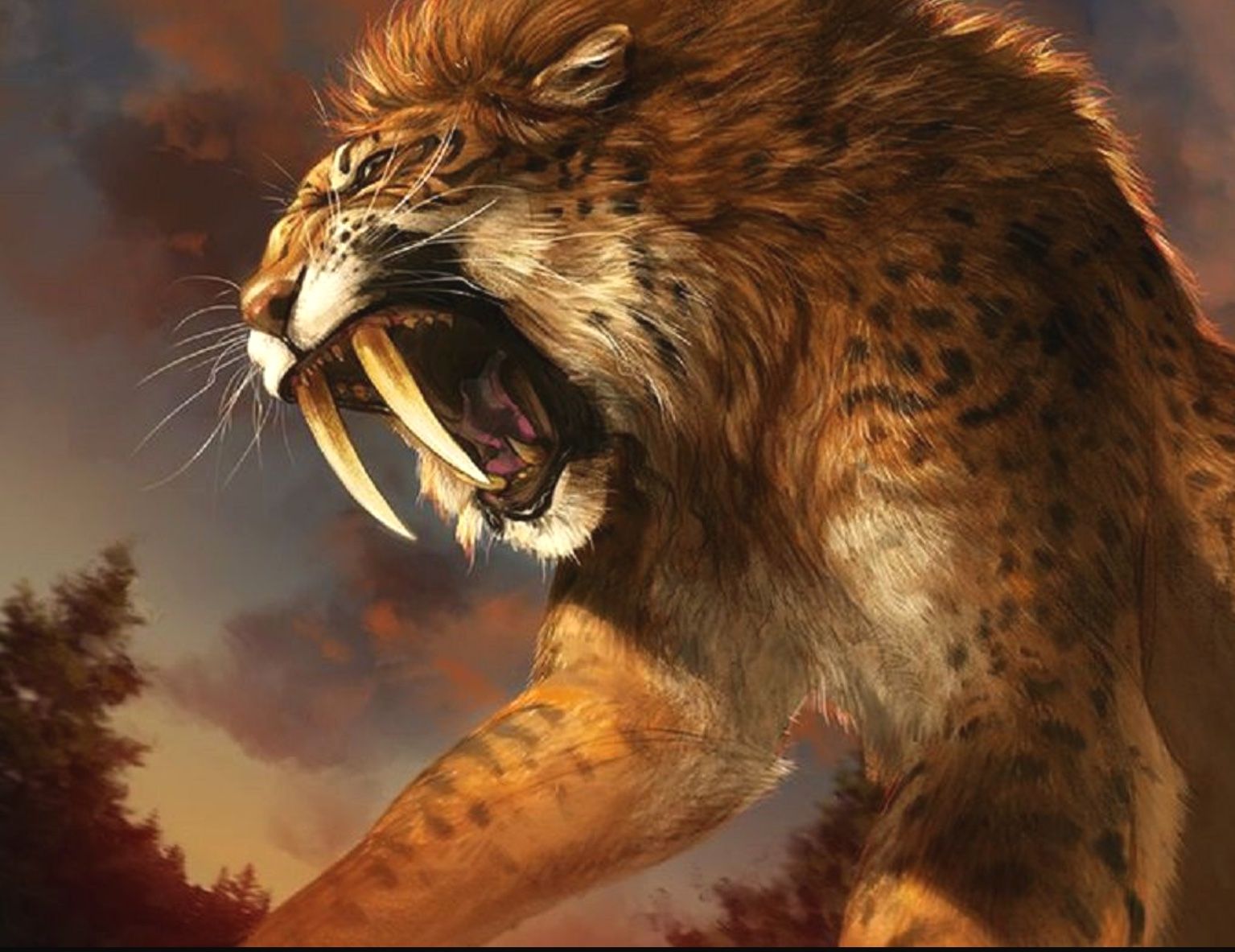Sterpus
The sterpus. Strong. Fast. Deadly. But when you get down to it, beautiful and fascinating. -Ayo Kito, Human Druid turned Zoologist in his book "The Sterpus: A scientific breakdown"The sterpus is an apex predator exclusively found in the Tambofar Savannah. They roam the savannah in large groups called assaults and prey on whatever food they can find. Much of what the world knows about sterpuses was given to them by druid Ayo Kito, who spent years living as a sterpus. He then became a zoologist and wrote a book shedding a ton of new light on sterpus behaviour.
Basic Information
Anatomy
The most distinctive element of Sterpuses is their long canine teeth, which they inherited from sabre-toothed-tigers. Males' are significantly longer, and curve forward, making them almost look like miniature tusks. Males grow a large mane around their neck, and heavy fur covers their front legs. Females do not grow a mane, but they get a ridge of fur that follows their spine down the back. Females also have spots.
The sterpus has an endoskeleton, like humanoids, and their spine arches significantly. They walk on all fours, and their skull bone is unusually tough. Like humanoids, they have 3 types of muscles, smooth, cardiac, and skeletal. Their leg muscles are exceptionally strong, allowing them to jump remarkably high. They are a vertebrate.
A rare inherited disease that male sterpuses can get causes their canine teeth to curve backward, like a female's. This is problematic for a male because their teeth get long enough that it digs into its shins. It is theorized that this is part of the reason males have a lot of fur on their shins.
Growth Rate & Stages
Within 5 days of being born, a sterpus can walk. Around 10 days later it starts travelling by itself, instead of riding on its mother's back. At about 11 months the cub can hunt for itself. The next month is crucial for they still relatively young sterpus are in competition with their brothers and sisters. A mother sterpus normally gives birth to 5-10 cubs. To ensure that they take their hunting seriously, whoever brings back the least amount of food for the assault is eaten at the end of the month. It's gruesome, but it works. the top 2 are designated to leave the assault when they are 2 years old and lead their own assault. When a sterpus is 3 it reaches sexual maturity and can mate. When it is 5 it becomes fully grown. The average sterpus will die of natural causes at around 25.
Dietary Needs and Habits
The sterpus is a carnivore and eats as such. They prefer large animals, such as antelope, goats, zebra, flamingo, even lions. If there is none of their preferred meal available they settle for rodents. While an assault could take a rhino, they prefer to avoid them as it is likely one of them will be injured and it is hard to bite through a rhino's tough skin.
Additional Information
Perception and Sensory Capabilities
It is estimated that a sterpus has more than 10 times the hearing abilities of humanoids. They can pick up the sound of a goat chewing grass underneath a cliff 300 feet away. They have the ability to see relatively well in the dark, and while they are not nocturnal, this is useful for a midnight snack. They have whiskers, which lets it feel its surroundings.
Scientific Name
feline
Origin/Ancestry
Tambofari
Lifespan
25 years
Average Height
5 feet
Average Weight
350 lbs.
Average Length
9 feet
Geographic Distribution
Remove these ads. Join the Worldbuilders Guild










Comments